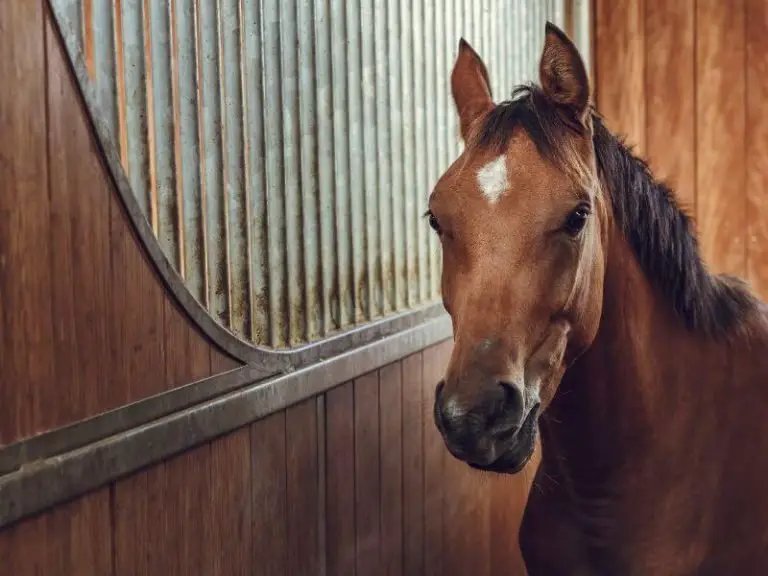
If you’ve ever found yourself in this situation, you probably realize just how layered this issue can be. There’s a lot of emotion involved—both for you and the horse. Whether you’re a seasoned horse owner or a newcomer trying to figure things out, understanding how to approach and manage these situations is essential. Let’s break it down together.
Understanding Horse Behavior
Horses are prey animals, and their instincts can sometimes put them on the defensive. When a horse is acting nervous or aggressive, it’s often due to a fear response. They might see something in their environment as a potential threat, which triggers their fight or flight instinct. Picture a deer bounding away from a predator; horses react similarly.
You might be wondering how to identify these signs. A nervous horse may exhibit behaviors such as pacing, high head carriage, or constantly looking around. On the flip side, an aggressive horse might pin its ears back, swish its tail, or even charge. Knowing the difference can help you respond appropriately.
Every horse has a unique personality, just like people. Some may be naturally more skittish, while others could have learned bad habits from previous experiences. Understanding your horse’s background is crucial. If you adopted a rescue horse, for instance, they might need extra patience and care as they adjust to their new surroundings.
Establishing Trust with Your Horse
Before doing anything else, building a solid foundation of trust with your horse is vital. Think of this as creating a relationship—like how you would approach a shy friend. It doesn’t happen overnight; it takes time, patience, and consistency.
Start by spending time with your horse in a calm environment. Approach them slowly, using a soft voice to show you’re friendly. Let them come to you at their own pace. This initial interaction can help them associate your presence with safety. Honestly, it’s all about making them feel comfortable and secure.
Be mindful of your body language. Horses are incredibly perceptive to non-verbal cues. Stand tall but relaxed, avoid sudden movements, and stay at an angle where they can see you clearly. You might even consider using treats as a reward for calm behavior, reinforcing positive associations. Just remember, this isn’t a race; treat it like a marathon where patience is key.
Creating a Safe Environment
Now, let’s talk about the environment. A calm, safe space can make a world of difference for a nervous or aggressive horse. If your horse feels threatened by their surroundings, it’ll be harder for them to relax or behave.
Start by ensuring their living area is free of any potential hazards. Look for sharp objects or areas where they might get stuck. If you’re working with them in a riding arena, make sure it’s quiet and free from distractions—like loud machinery or other horses running around.
Sometimes, a simple change can lower their anxiety. Consider introducing calming scents, such as lavender, in their stable. You’d be surprised how much the right atmosphere can help a horse feel more at ease. This small step to modify their environment can lead to significant changes in behavior.
Effective Groundwork Techniques
Groundwork is a crucial skill when handling any horse, especially those that may be nervous or aggressive. It’s like having a conversation without words, allowing you to communicate and establish boundaries without putting yourself in harm’s way.
Start with basic groundwork exercises like leading, yielding to pressure, and lunging. These exercises help teach your horse to listen to your cues and respect your space. When leading, keep the lead rope short but relaxed, giving them enough room to move while still maintaining control. Here’s the thing—if they pull, don’t yank back, as this may escalate the tension. Instead, encourage them to move forward at a steady pace.
You can also practice desensitization techniques. Use soft objects like a plastic bag or a gently waving flag to help them get used to unfamiliar sights and sounds. Gradually introduce these items, rewarding calm behavior until they learn there’s nothing to be afraid of. It’s about slowly building their confidence and trust in you.
Recognizing When to Seek Professional Help
There might come a time when your horse’s behavior seems overwhelming, and that’s okay. Knowing when to reach out for professional help is just as important as the steps you can take yourself. Think about it like going to the doctor; sometimes, you just need an expert’s help for a tailored solution.
If you’re feeling unsure or if your horse exhibits persistent aggressive behavior, consider hiring a professional trainer or an equine behaviorist. They have the experience to assess the situation objectively and can offer valuable insights and techniques.
Don’t hesitate to seek advice from your veterinarian as well. Sometimes, underlying medical issues can cause behavioral problems, and addressing those can lead to substantial improvements. Remember, asking for help is a sign of wisdom, not defeat.
Developing a Routine
Consistency is key when working with a nervous or aggressive horse. Think of a routine as a safety blanket for your horse—it gives them structure and predictability, which can reduce anxiety.
Establish a daily routine that includes grooming, exercises, and even some quiet time together. This predictability helps them feel more secure and builds that all-important trust. Stick to a similar schedule as much as possible, and be patient as they adjust.
As part of this routine, monitor their progress closely. Note any days when they seem more relaxed or when they display signs of anxiety, and adjust your training accordingly. Keeping a journal can help you track behaviors over time, making it easier to spot patterns.
Handling a nervous or aggressive horse isn’t just about techniques; it’s a journey that requires patience, understanding, and empathy. Just like forging any meaningful relationship, it takes time to build trust and respect. By understanding your horse’s behavior, creating a safe environment, and establishing consistent routines, you can help your horse feel more secure.
Remember, every horse is unique, and what works for one may not work for another. Don’t be too hard on yourself if progress seems slow. Keep that friendly conversation going, and with time, you’ll see improvements. After all, the bond you build with your horse is one of the most rewarding experiences you can have. So take a deep breath, and enjoy the journey together!

